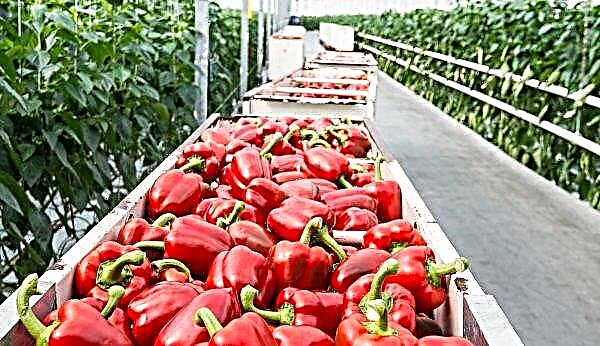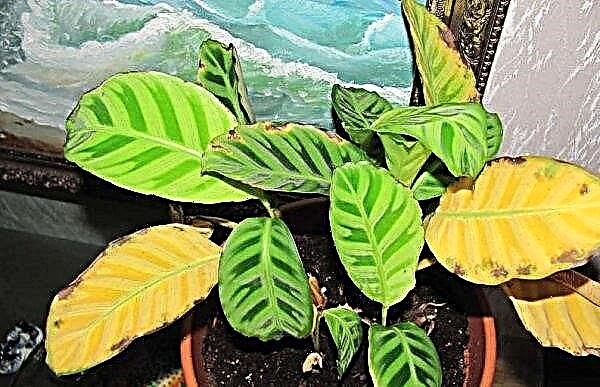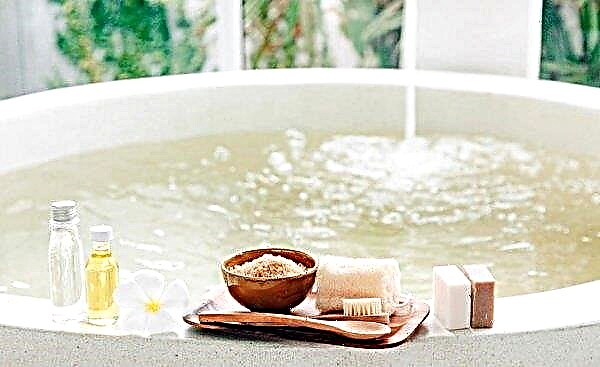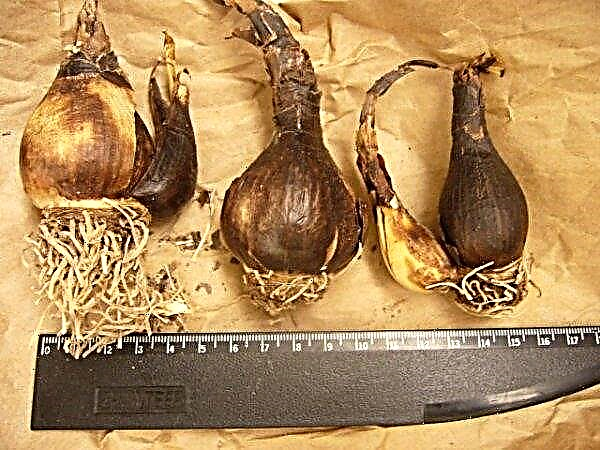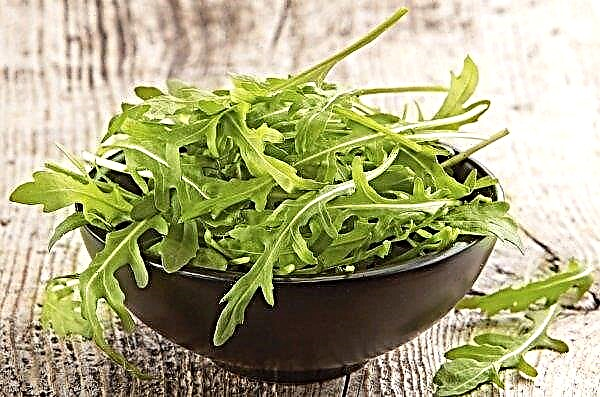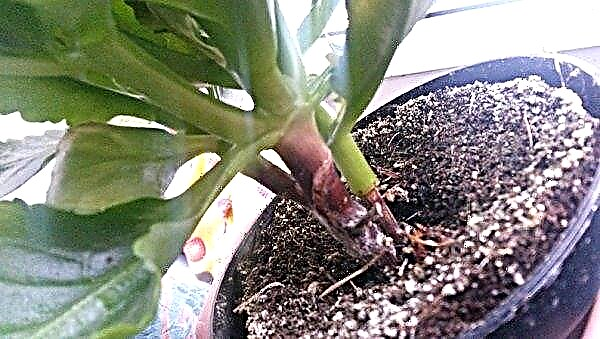Kalanchoe, like other indoor plants, needs a periodic transplant. The success of its further cultivation depends on a properly conducted process. Transplant recommendations can be found in this article.
Causes of Kalanchoe Transplant
A flower transplant is the key to its proper development and healthy growth. Despite the fact that Kalanchoe does not like this procedure, it still needs to be performed.
There can be several reasons for a flower transplant:
- The pot has become small for the roots (they are visible through the drainage holes).
- Missing flowering.
- The roots rotted.
- The leaves brightened.
- Recently bought a flower (or presented it).
When can a plant be transplanted
A planned transplant must be carried out in the spring - in April-May. Since Kalanchoe is difficult to tolerate, during planting at this time it will just have time to recover, adapt and gain strength before the winter period.
If the plant is just acquired, then there is no need to rush to move it to a new tank: it should get used to new conditions of detention for some time. And only when the adaptation is successful, can a transplant be carried out.Did you know? The most expensive indoor flower - the Shenzhen Nongke orchid - was sold at auction in 2005 for 202 thousand dollars.
If for any reason the soil and pot of the plant need to be changed, for example, due to rotting of the roots or waterlogging of the soil, then the transplant can be carried out at any time. If possible, then you need to wait for the period when the flowers will bloom.
Transplant Preparation
To conduct a transplant, you must first take care of the purchase of a pot, soil and drainage.
If the procedure is carried out due to overgrown roots, then the pot needs to be purchased 2 cm more in diameter than the previous one. It can be made of plastic or ceramic. When buying, you need to inspect the container for cracks, burrs, scratches, sharp edges - such defects can damage the organs of the plant. Preference should be given to tanks with a wide pan, into which it will be easier to fill the water.
Before planting Kalanchoe, the pot will need to be washed with laundry soap, rinsed with boiling water and rinsed with running water. Landing can only be carried out in a completely dry container.
The plant can be planted in a ready-made soil mixture for succulents. For epiphytic varieties, it is necessary to add humus to it and feed it with universal fertilizer. Soil acidity should be at the level of 5.5–6.5 pH. To determine this indicator, you can use litmus paper, which is sold in a specialized store. If the acidity is higher, you need to add dolomite flour or lime. At a low rate, peat should be mixed.Important! The purchased substrate does not need to be processed. A self-prepared mixture must be disinfected by pouring it with a solution of potassium permanganate or by baking in the oven (microwave).
The soil can be prepared with your own hands.
To do this, mix the following components:
- deciduous land - 2 parts;
- turf land - 4 parts;
- rotting peat (coniferous land) - 1 part;
- sand - 1 part.

Walkthrough on Kalanchoe transplant at home
So that after moving to a new pot and soil, the plant quickly adapts to new conditions and continues to grow normally, when transplanting, it is necessary to adhere to some recommendations.
After the purchase
Kalanchoe is transplanted carefully so as not to damage its root system.
The transplant is done as follows:
- At the bottom of the pot lay a 2-centimeter layer of drainage.
- At 2/3, fill the pot with soil substrate.
- Moderately moisturize.
- Pour Kalanchoe and remove it with an earthen lump from the pot.
- Clean the roots and inspect them for damage.
- Remove infected roots with scissors or a knife, treat the cut points with activated carbon.
- Place the flower in a new pot, spreading the roots evenly.
- Fill with soil, leaving 1-3 cm from the edge of the pot. Check that the root neck is flush with the ground.
- To carry out hydration.

During flowering
Blooming Kalanchoe can not be disturbed: it is strictly forbidden to transplant it during this period. It is necessary to wait until the inflorescences completely bloom, and only then proceed to the transplant. The technology of its implementation is no different from that which is produced after the purchase.

Planting several Kalanchoe in one pot
Many gardeners are interested in the question of whether it is possible to plant several copies in one container. Such landing is allowed. Some owners of these indoor plants manage to plant even different types of Kalanchoe together, making beautiful compositions from varied flowering plants.
For such landings, rectangular boxes are purchased. Between plants, a certain distance must be observed, which will allow each of them to develop and grow normally. It is advisable to select flowers of the same height.
Video: transplanting several Kalanchoe into one pot
If plants are planted in an ordinary pot, then the diameter should be calculated based on the recommendations of 9 cm per 2 copies. Capacity height - 15 cm.
Kalanchoe can also be planted with other types of plants, but they must have the same requirements for microclimate, soil, watering and top dressing.
Features of post-transplant care
The fastest adaptation, normalization of growth, healthy appearance and maximum decorativeness can be achieved from the plant, if you create favorable conditions for it and organize quality care.
Location and conditions of detention
During the growing season - from spring to autumn, Kalanchoe feels best when grown on the windowsills of the eastern and western sides. In winter, he needs more heat and better illumination, so moving to the southern windowsill will have a good effect on his health.
The recommended daylight hours for this indoor culture are 12 hours. During the flowering period, lighting should be more intense. In the autumn and winter periods additional illumination is required. In the last month of summer, you need to reduce daylight hours to 9 hours.Important! After acquiring a plant it needs to be gradually accustom to new lighting: first pritenit, and then daily increase the time spent in the light.
This flower is not demanding on temperature - it can feel normal at + 18 ° С and at + 28 ° С. Under hotter conditions, Kalanchoe will most likely refuse to bloom. In winter, it grows well at + 16 ... + 18 ° C. Lowering the thermometer below + 10 ° C may be detrimental to the plant.
Humidity indicators are also not critical for Kalanchoe. Dry air does not affect its growth and development. He does not need spraying, except that during a period of intense summer heat, such a procedure will please him.
Watering
Watering the plant is recommended in moderation. After transplanting, the first watering can be carried out a week later. In the future, you need to monitor the state of the upper soil layer: you need to water when it dries.
Humidification is carried out for 1–2 days, filtered, rain, or melt water of warm temperature. Watering with cold and hard water is strictly prohibited.
The best way to add moisture for Kalanchoe is the bottom (in the pan): this way the plant will take as much water as it needs. After 30-40 minutes, you need to drain the water from the pan to avoid root decay.
In winter, humidification is reduced to a minimum.
Video: proper watering and fertilizing Kalanchoe
Fertilizer application period
Organic and mineral supplements are needed for Kalanchoe: they are added alternately from May to July every 2 weeks. Then they take a break and the next application is made in the fall, during the appearance of the buds. In winter, the plant is not fertilized.
For Kalanchoe, ready-made fertilizers designed for succulents and cacti, for example, Stimovit (25 ml / 1 liter of water), are also suitable.
The first top dressing after transplantation is carried out about a month later, after the appearance of new shoots.
Did you know? The most stinking flower in the world is recognized as rafflesia, or "cadaveric lily." It grows on the islands of Kalimantan and Sumatra. Its smell is often compared with that which exudes rotting meat.
Typical floriculture errors during a transplant
The owner of Kalanchoe during landing should avoid the following common mistakes:
- Planting a plant in an oversized pot. In this case, the roots will grow, and the leaves will fade, flowering will be absent.
- Damage to the roots during transplantation. Handle the root system carefully.
- Root neck deepening. This can cause root decay.
- Incorrect soil selection. Often, flower growers plant a flower in universal soil for flowering crops. This is not worth it - if a ready-made soil mixture is purchased, then it should be developed for cacti and succulents.
- Transplant during flowering.
- Move to new soil and pot immediately after planting.
- Ignoring high drainage piling. Drainage is a necessary attribute in the pot, which performs the function of drainage and prevents root decay.

So, transplantation is part of a set of mandatory measures to care for Kalanchoe, thanks to which it is possible to prevent the development of diseases and strengthen immunity. However, without good reason to disturb it, it is not recommended to disturb the plant: it is difficult to tolerate movement in another pot and for a long time adapts to new conditions.




